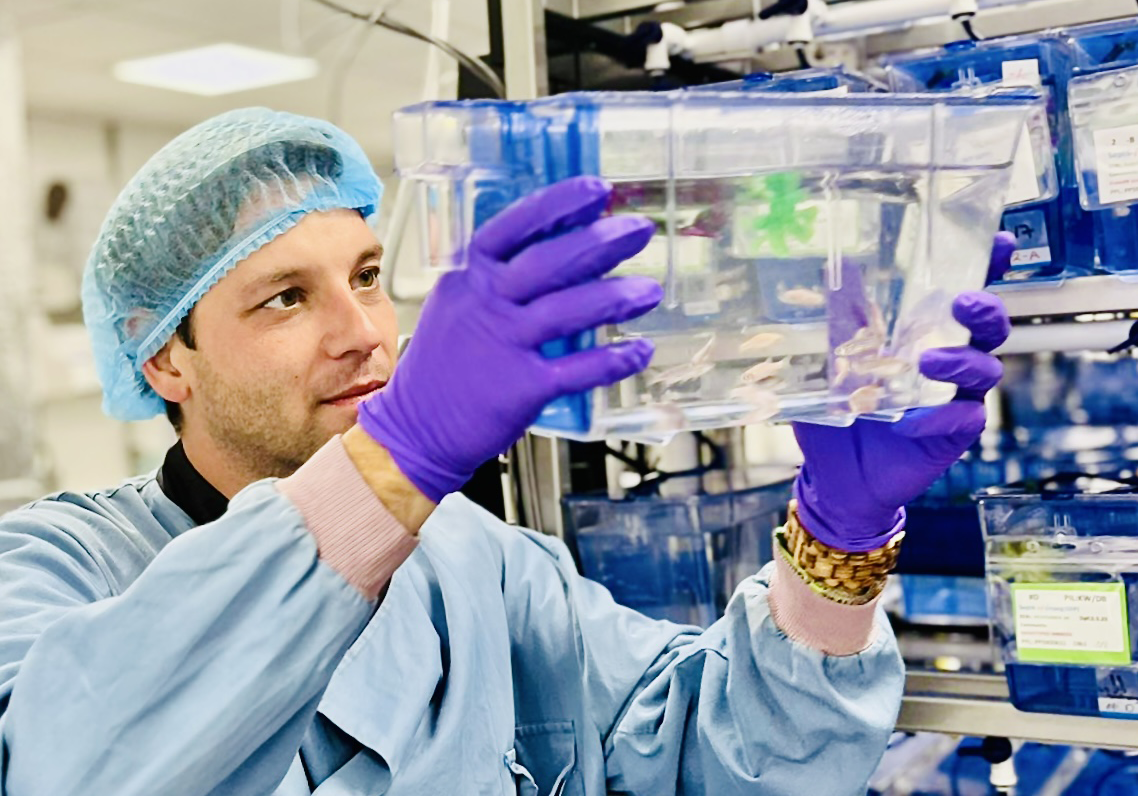Septins give insights into inflammation
London School of Hygiene & Tropical Medicine https://lshtm.ac.uk/themes/custom/lshtm/images/lshtm-logo-black.png Tuesday 6 August 2024
Look deep into the structure of any cell or organism with a defined nucleus (eukaryote), and you are likely to find septins.
Septins have been identified in nearly all eukaryotes, including humans. They are components of the cytoskeleton, a network of protein filaments that helps eukaryotic cells hold their shape and carry out essential functions.
Septins were originally discovered by Nobel Laureate Leland Hartwell in 1971 as being essential for cell division in budding yeast.
Over the last 50 years they have been shown to play key roles in a wide variety of cellular processes including cell division, sprouting cilia and flagella, and forming neurons. It is known that different septins can assemble to form structures including filaments, rings and cages that interact with cellular membranes.
But despite all this research the mechanisms underlying septin assembly and function are nothing like as well understood as those of other cytoskeleton components actin and microtubules.
Previous LSHTM research has found an association between septin dysfunction and cancer, neuropathies and a range of other conditions.
Now new LSHTM research using zebrafish, published in Cell Chemical Biology, is uncovering the role septins play in regulating the inflammatory response. We asked study authors Dominik and Serge about their work and what it could reveal about inflammatory conditions.
How can zebrafish help us understand the human immune system?
Zebrafish are an important animal model for biomedical research, in part because they share 80% of the genes that control their immune system with humans.
Zebrafish develop rapidly, are transparent (allowing for live cell and high-resolution fluorescent microscopy imaging) and are highly amenable to genetic manipulation via CRISPR technology. In our lab, we can exploit these properties to investigate the complex interactions between bacterial pathogens and the host innate immune response.
We are best known for using the zebrafish infection model to study Shigella infection. Shigella causes shigellosis, a bacterial infection characterised by diarrhoea, fever, and abdominal pain that leads to approximately 200,000 deaths each year.
There is no natural mouse model of shigellosis (mice are naturally resistant to Shigella infections), so our lab pioneered the zebrafish model to study Shigella infection in vivo.
The zebrafish infection model recreates the major hallmarks of human disease, including cell death caused by macrophages (a type of white blood cell that act as a first line of host defence against pathogens).
As a result, our work at LSHTM using the zebrafish infection model has significantly contributed to understanding Shigella interactions with innate immunity, as highlighted by recent studies of temperature-dependent virulence, bacterial persistence, innate immune training, and bacterial cell-cell interactions.
What different roles do septins play within cells?
The vast majority of research labs studying septins are focused on their role in cell division. But in our lab we have been studying the role of septins in host defence against Shigella infection, to better understand the role of septins in non-dividing cells..
We discovered that septins can entrap Shigella in cage-like structures to restrict their replication and dissemination. Despite extensive research on Shigella-septin cage entrapment, we still don’t know that much about the breadth of roles septins play in host defence.
At LSHTM we have a Schedule 5 lab and zebrafish infection facility to study Shigella. Together this research environment uniquely enables us to exploit our zebrafish infection models to discover previously unknown role for septins in the regulation of inflammatory responses during Shigella infection.
What is the role of septins in immune cells?
The role of septins in immune cells is relatively understudied. Much of our current understanding of septin biology stems from research in yeast and epithelial cell lines.
Initially, our work using macrophages was consistent with our work using HeLa epithelial cells, showing that septins play key roles in mitochondrial dynamics and septin caging during Shigella infection.
We hoped that by investigating the role of septins in macrophages we could gain fresh insights into septin-mediated immunity and identify new ways to control infection and inflammation.
Out of the different mechanisms of cell death, why were you interested in pyroptosis?
Pyroptosis is a process of regulated cell death associated with inflammation. The name ‘comes from the Greek words ‘pyro’ meaning ‘fire’ or ‘fever’ and ‘ptosis’ meaning ‘to fall’.
Pyroptosis is of great interest because of its pro-inflammatory potential and its association with various human pathological conditions, including neurodegenerative diseases, autoimmune disorders and infectious disease.
This new research published in Cell Chemical Biology, investigating septins in pyroptosis, has been very challenging. This is partly because of the diverse roles of septins in cellular processes and the complexity of the pyroptotic pathway.
Two proteins, gasdermin D and ninjurin-1, became important for our study because of their recently discovered ability to form pores at the plasma membrane (facilitating the release of pro-inflammatory cytokines) and to promote cell-membrane rupture, respectively.
These new data offered clues into how septins could be involved in the regulation of the pyroptotic pathway, as both gasdermin D and ninjurin-1 are located at the plasma membrane (where we found that septins in macrophages are also located).
What link did you find between septins and how macrophages die upon Shigella infection?
Our main findings showed that macrophage pyroptosis triggered by septins is a critical mechanism for infection control because of how it manages inflammation.
Septins enhance macrophage pyroptosis during Shigella infection, by regulating gasdermin D pore formation and ninjurin-1 membrane rupture. Based on our results, we hypothesise that septins organise plasma membrane composition and create a favourable platform for gasdermin D pore formation and its coordination with ninjurin-1 mediated membrane rupture. Taken together, we conclude that septins are gatekeepers of membrane disintegration during pyroptosis. Our future research will look to identify more precisely how septins interact and regulate the pyroptotic apparatus.
Over the past 4 years working as a postdoc at LSHTM, Dominik has combined his research on septin biology with the Mostowy lab’s renowned zebrafish infection models. This means we are now able to use CRISPR genome editing to manipulate septins in zebrafish, enabling us to explore the role of septins during Shigella infection in vivo.
These results show that septins play a central role in host defence and future work using complementary models (in vitro using cell-free systems, in cellulo using tissue culture cells, in vivo using zebrafish) will be important to promote discovery of anti-bacterial and anti-inflammatory treatments.
How might this ultimately lead to new ways of managing human inflammatory disease?
For the first time, our work has directly linked septins to pyroptosis. In addition to our study, a companion study has shown that a septin-modifying compound, forchlorfenuron, can activate the inflammasome and induce pyroptosis. Taken together, these two studies highlight the potential for using septin-targeting drugs to effectively manage inflammation.
This approach may be useful as a therapy aiming to support the body’s natural defence mechanisms against bacterial pathogens which depend on inflammation for their life cycle, including Shigella.
By manipulating septins to manage inflammation, such therapies could offer significant benefits for patients suffering from a wide range of conditions in which septins have been implicated.
LSHTM's short courses provide opportunities to study specialised topics across a broad range of public and global health fields. From AMR to vaccines, travel medicine to clinical trials, and modelling to malaria, refresh your skills and join one of our short courses today.

